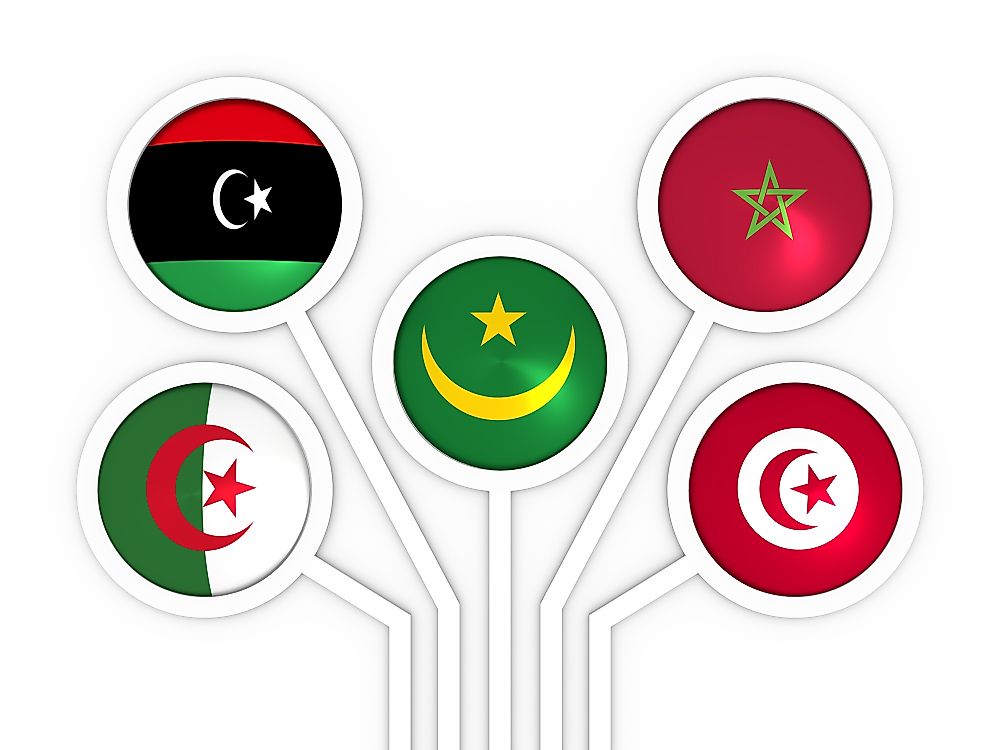What Is The Arab Maghreb Union?

Arab Maghreb Union
The Arab Maghreb Union (AMU) is a union formed by Tunisia, Algeria, Morocco, Libya, and Mauritania with the aim of enhancing trade between member countries. However, it is considered dormant because it has not made any particular progress since its inception. In fact, the major meeting held by the member states dates back to the year 2008.
Creation Of The AMU
The union was formed on February 17, 1989, in Marrakech, Morroco. Initially, the idea of the union had been proposed as early as 1956 after Morocco and Tunisia had gained independence. The first summit attended by these member countries was held in the Maghreb in 1988. The primary objective of the union was to ensure cooperation in the region and institutional uniformity. Some of the aims of the union are:
i.Taking part in the international dialogue.
ii.Ensure the independence of its members.
iii.Protect the assets of the members, among other goals.
In fact, the region boasts of some natural resources such as gas reserves, phosphates, and oil reserves among many other resources. The region’s proximity to Europe had added another advantage. Member countries held chairmanship through the rotation.
Operations And Challenges
The pioneers of the union had an intention of bringing together member countries to cement political and economic ties. Since most of the countries in this region are made up of mainly Muslims, it was expected that the union would become stronger. Also, the newly independent states were eager to solve problems regionally to hasten progress socially and politically. The availability of minerals and the fact that the region is located near Europe raised expectations.
AMU’s ambitions of regional cooperation have, however, been dealt a blow by many factors. To begin with, the leaders were a major hindrance to the union’s smooth operations due to political differences. For example, Moroccan and Libyan presidents skipped meetings held in Algiers making Algeria transfer presidency to Libya in 1994. As a result, it raised tension in the member states.
The decision to transfer presidency was not well received by some members. The then Libyan president, Muammar Gaddafi suggested that time had come to put the union in a “freezer.”Member countries were not pleased due to Gaddafi’s rule. The Libyan president's way of ruling was questionable since many feared his dictatorial rules. Consequently, the move raised further tensions to an already volatile union.
Another challenge to the union was resolving issues between Algeria and Morocco. The two countries had paralyzed the union’s operations and meetings during the early 1990s as they were scrambling for Western Sahara. The two countries have been in constant conflict despite diplomatic interventions and Morocco integrated Western Sahara into its kingdom, much to Algeria’s opposition. In spite of Western Sahara’s declaration of independence as the Sahrawi Arab Democratic Republic, Morocco did not give in. Algeria has supported the sovereignty of Sahrawi since then. It is through such disagreements that the union has failed to pick up.
Furthermore, Libya’s political instability has further paralyzed the union. When Gaddafi was overthrown, the region has become a global focus on human trafficking. The political tensions and disagreements have summed up the union’s problems which are on the rise.











